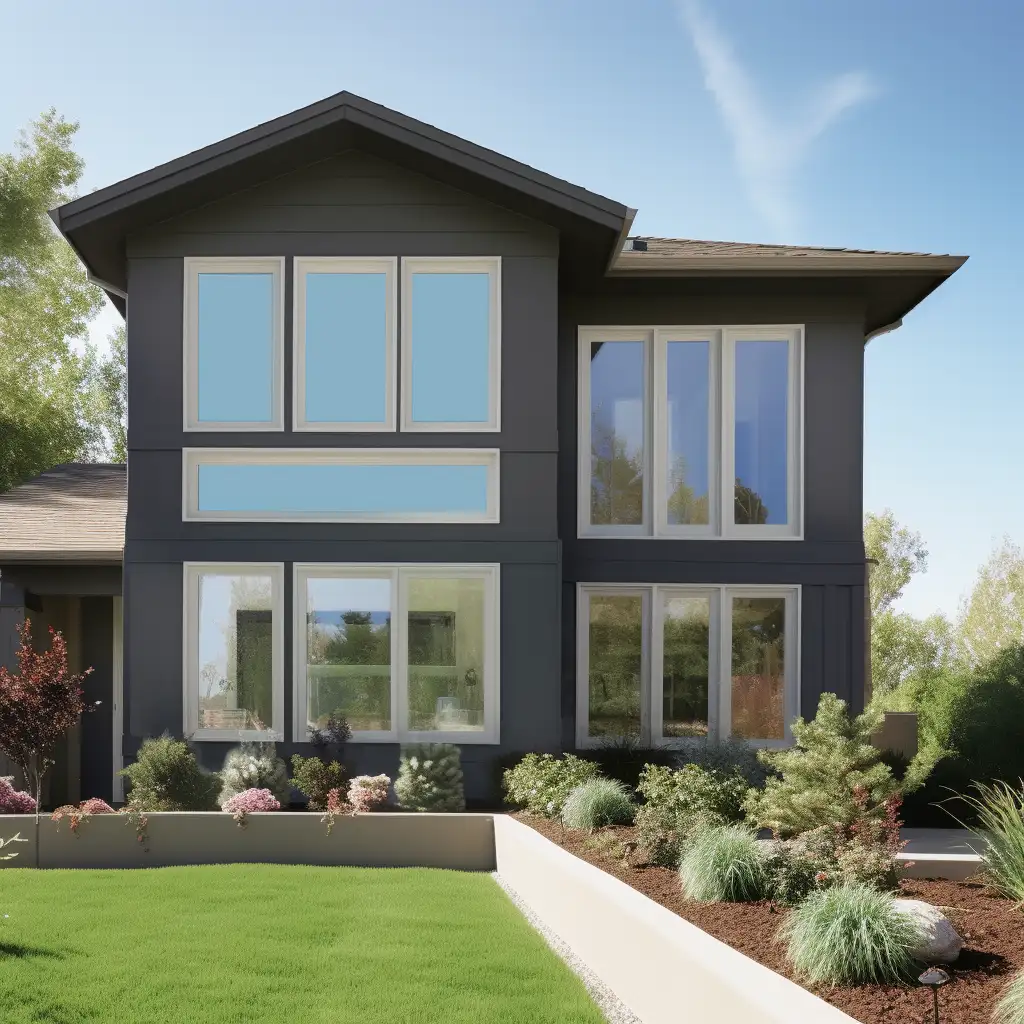Residential Window Tint: Keep Your Home Cool in the Summertime Warmth
Residential Window Tint: Keep Your Home Cool in the Summertime Warmth
Blog Article
Just How Residential Window Tinting Improves Your Home's Power Efficiency
Residential window tinting offers an engaging service for house owners looking for to enhance power performance within their living spaces. By applying specialized films to windows, it successfully reduces warmth transfer, thus supporting indoor temperature levels and minimizing the need for too much heating or cooling.
Understanding Window Tinting
Understanding window tinting is crucial for homeowners seeking to enhance both comfort and power effectiveness in their home. Residential Window Tint. Home window tinting entails the application of a slim movie to the interior or outside surface of glass home windows. This movie can dramatically regulate the quantity of sunshine and warmth that gets in a home, hence influencing indoor climate conditions
There are different kinds of window tinting films readily available, each with unique homes. The effectiveness of window tinting is commonly measured by its Visible Light Transmission (VLT) percent, which shows exactly how much light can pass with the movie.
Benefits of Power Effectiveness
Home window tinting not just improves aesthetic appeals but likewise plays a significant function in improving energy efficiency within property spaces. By minimizing warm transfer through home windows, colored films produce a more secure indoor environment, which can result in considerable decreases in power consumption for heating & cooling. This energy effectiveness converts into reduced utility expenses, giving property owners with considerable long-term financial savings.

Furthermore, window tinting enhances the convenience of living areas. By decreasing glare and obstructing damaging UV rays, tinted home windows produce a more positive atmosphere, which can cause enhanced well-being for passengers. The protection versus UV rays also assists protect furniture and floor covering from fading, adding to the long life of family things.
Just How Tinting Works
Tinting films run through a mix of sophisticated materials and modern technologies developed to manage the amount of solar power entering a home. Largely composed of polyester, these movies commonly incorporate metal or ceramic bits that absorb and mirror heat. This double capacity allows them to substantially decrease the infiltration of ultraviolet (UV) rays and infrared radiation while permitting noticeable light to travel through.
The effectiveness of home window tinting is gauged by its solar heat gain coefficient (SHGC), which suggests just how much solar power is transmitted with the window. Reduced SHGC worths are preferable as they signify better heat rejection. Furthermore, window tints can include a variety of tones, permitting home owners to tailor their aesthetic choices while boosting energy efficiency.
In addition, these movies function as an obstacle, protecting my company against warmth loss during colder months by reflecting indoor heat back into the living space. This thermal insulation impact matches the cooling benefits obtained throughout warmer months, adding to a balanced indoor climate year-round. By taking care of solar energy efficiently, domestic window tinting not only enhances convenience but also plays a vital role in decreasing power intake and decreasing utility expenses.
Selecting the Right Color

There are different kinds of home window movies readily available, consisting of dyed, metalized, and ceramic. Colored films are cost-effective however may have limited sturdiness. Metalized films supply better warm denial but can conflict with electronic signals. Ceramic movies provide exceptional warmth control without compromising exposure and are extremely sturdy, making them a popular option.
Noticeable light transmission (VLT) is another critical factor, as it indicates the amount of natural light that can travel through the tinted glass. House owners need to pick a color with a VLT that enhances their lights choices while still giving adequate glare reduction.
Additionally, assessing the solar heat gain coefficient (SHGC) can help determine how well a tint can obstruct warmth from sunshine. A reduced SHGC shows far better warmth control, inevitably improving energy efficiency.
Installment and Upkeep Tips
Appropriate installation and upkeep are important elements in optimizing the benefits of residential home window tinting. To attain ideal results, it is a good idea to employ a qualified specialist for installation. This makes certain that the tint is applied correctly, staying clear of air bubbles, wrinkles, or imbalance that might compromise efficiency. Experts also utilize specialized tools and strategies, which can enhance the resilience and effectiveness of the color.
Complying with setup, upkeep is essential to prolong the life of the window movie. It is advised to wait at least 30 days before cleaning up the tinted home windows to enable the sticky to treat totally.
Attending to these problems quickly can avoid further damage and maintain power effectiveness. By adhering to these installation and upkeep ideas, home owners can ensure learn the facts here now their home window tinting continues to offer significant power financial savings and convenience for years to come.
Verdict
In verdict, domestic home window tinting serves as an efficient solution for improving power performance within homes. By minimizing heat transfer and blocking unsafe UV rays, window movies add to reduce energy usage and boosted interior comfort.
Home window tinting entails the application of a thin movie to the inside or exterior surface of glass windows. By decreasing warm transfer with windows, tinted films produce an extra stable indoor climate, which can lead to considerable decreases in power consumption for heating and cooling.The performance of window tinting is measured by its solar warm gain coefficient (SHGC), which suggests just how much solar power is sent through the window. By handling solar web power properly, residential window tinting not only improves comfort however also plays an important function in minimizing power intake and decreasing energy costs.
By lowering warmth transfer and obstructing dangerous UV rays, home window films contribute to lower energy usage and boosted indoor comfort.
Report this page